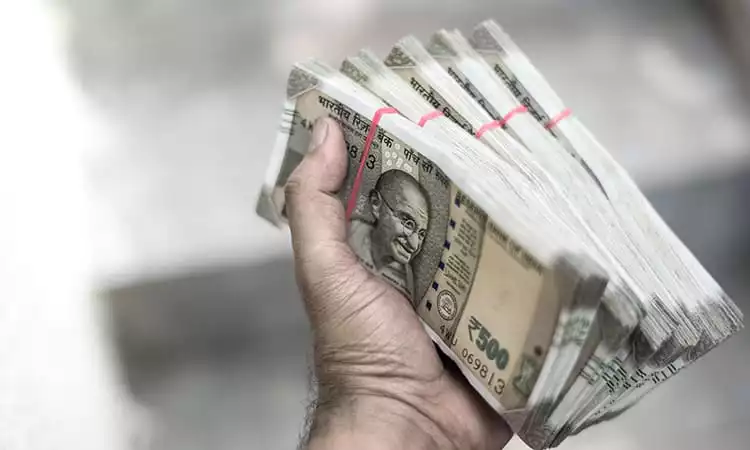What Is the Ideal Way to Invest Rs 10 Lakhs?
Which is the best way to invest 10 Lakh Rupees in India? What are investment ideas for ten lakhs worth lump sum investment - Mid cap, multi cap, STP etc.

A corpus of Rs.10 lakh is quite big if you are looking at wealth creation from a long-term point of view. When you invest a corpus you cannot just go by returns. You also need to consider the risk and the tax considerations. If you have a corpus of Rs10 lakh, then assuming that you have a good risk appetite, what is the investment mix that you can look at?
Getting Your Investment Mix Right
Any corpus must never be looked as an all-equity or all-debt kind of an approach. Equities give you higher returns and help you to create wealth over the long run. On the other debt, gives you stability and regular returns. The combination of equity and debt will depend on your age and your risk capacity. Assuming that you still have a 25-year working life ahead of you, the ideal asset mix will be in the ratio of 70:30 with 70% invested in equity funds and 30% invested in debt funds. While the equity funds will give you higher growth and wealth creation, the debt funds will provide you stability and predictable returns. Here is how your asset mix will look like.
Particulars
Equity Allocation
Debt Allocation
Total Allocation
Allocation Ratio
70%
30%
100%
Corpus
Rs.7,00,000
Rs.3,00,000
Rs.10,00,000
Indicative Annual Returns in (%)
14.00%
9.00%
Wealth created at the end of 25 years
Rs.1.85 crore
Rs.25.87 lakhs
Rs.2.72 crore
Effectively your corpus will grow to Rs.2.72 crore over a period of 25 years if you adopt a mix of 70:30 in equity funds and debt funds. Of course, the final corpus will depend on how you distribute your corpus between equity and debt based on your risk appetite.
How about Combining Equity, Debt and Rupee Cost Averaging?
One of the problems with lump-sum investing is that you do not know what is the right time to enter? Timing the market tops and market bottoms are quite difficult and if the market corrects after you enter then you can sit on MTM losses for a long time. That is where rupee cost averaging comes in handy. You can get the best of equity, debt and rupee cost averaging (RCA) by opting for a systematic transfer plan (STP). How does an STP work?
A monthly STP is all about first investing the entire corpus in a liquid fund with limited downside risk. Then, each month you can sweep a fixed amount into equity SIP for a period of, say, 3 years (36 months). If you do that, then you do not need to worry about timing the market. You can work out the STP in the following manner.
Step 1: You invest the entire corpus of Rs.10 lakh in a liquid fund which will yield around 6% annually. This is at least 200 basis points better than keeping the money in a savings account.
Step 2: Each month you fix a certain amount of say Rs.30,000 into an equity fund. Remember, that your corpus in the liquid fund will continue to earn returns of around 6% per annum.
Step 3: Over a period of 3 years you invest the corpus of Rs.10 lakhs plus the return on liquid funds into an equity fund spread in equal installments over 36 months. Thus the volatility will be evened out during this period.
Step 4: Your asset mix will gradually shift from a full debt exposure to a full equity exposure. This will ensure that your idle money is productive and you also get the benefit of rupee cost averaging (RCA).
Step 5: Since RCA reduces your average cost of acquisition of the equity over a period of 3 years, you are more likely to be profitable in your equity fund investment as volatility will work in your favor.
An STP is the most efficient way of investing a lump sum corpus by managing returns and risk better.
Disclaimer: The information contained in this post is for general information purposes only. IIFL Finance Limited (including its associates and affiliates) ("the Company") assumes no liability or responsibility for any errors or omissions in the contents of this post and under no circumstances shall the Company be liable for any damage, loss, injury or disappointment etc. suffered by any reader. All information in this post is provided "as is", with no guarantee of completeness, accuracy, timeliness or of the results etc. obtained from the use of this information, and without warranty of any kind, express or implied, including, but not limited to warranties of performance, merchantability and fitness for a particular purpose. Given the changing nature of laws, rules and regulations, there may be delays, omissions or inaccuracies in the information contained in this post. The information on this post is provided with the understanding that the Company is not herein engaged in rendering legal, accounting, tax, or other professional advice and services. As such, it should not be used as a substitute for consultation with professional accounting, tax, legal or other competent advisers. This post may contain views and opinions which are those of the authors and do not necessarily reflect the official policy or position of any other agency or organization. This post may also contain links to external websites that are not provided or maintained by or in any way affiliated with the Company and the Company does not guarantee the accuracy, relevance, timeliness, or completeness of any information on these external websites. Any/ all (Gold/ Personal/ Business) loan product specifications and information that maybe stated in this post are subject to change from time to time, readers are advised to reach out to the Company for current specifications of the said (Gold/ Personal/ Business) loan.



